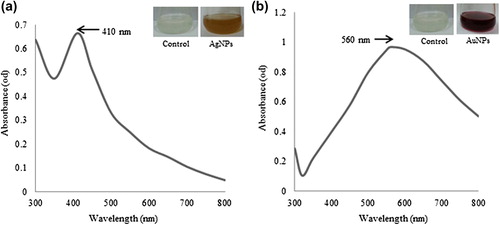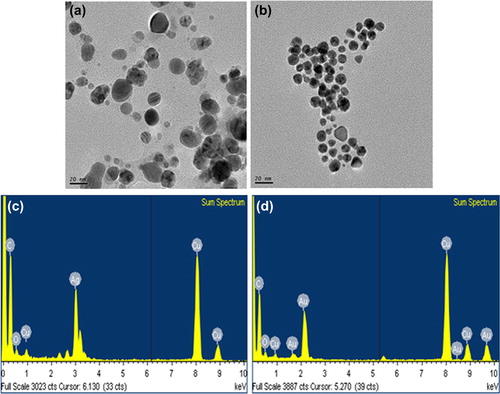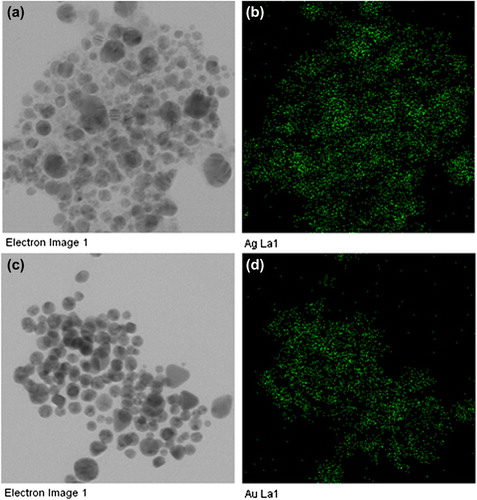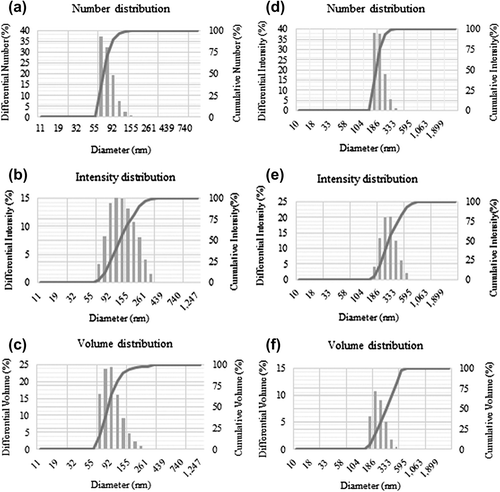Figures & data
Figure 1. UV-vis spectra of the contents of the reaction mixture for silver nanoparticles (a) and gold nanoparticles (b), respectively.

Figure 2. TEM image of spherically shaped silver nanoparticles (a) and gold nanoparticles (b). EDX spectra of silver nanoparticles (c) and gold nanoparticles (d), respectively.

Figure 3. The results of elemental mapping indicate the distribution of elements. TEM micrograph of silver nanoparticle pellet solution (a), and silver element (b), respectively. TEM micrographs of gold nanoparticle pellet solution (c), and gold element (d), respectively.

Figure 4. Particle size distribution of silver nanoparticles according to number (a), intensity (b), and volume (c), respectively. Particle size distribution of gold nanoparticles according to number (d), intensity (e), and volume (f), respectively.

Figure 5. Antimicrobial activity of silver nanoparticles against Vibrio parahaemolyticus [ATCC 33844] (a), Staphylococcus aureus [ATCC 6538] (b), Bacillus cereus [ATCC 14579] (c), and Candida albicans [KACC 30062] (d), respectively.
![Figure 5. Antimicrobial activity of silver nanoparticles against Vibrio parahaemolyticus [ATCC 33844] (a), Staphylococcus aureus [ATCC 6538] (b), Bacillus cereus [ATCC 14579] (c), and Candida albicans [KACC 30062] (d), respectively.](/cms/asset/8c3d2cdb-a72d-4956-b3c5-26d252a792e5/ianb_a_1008514_f0005_oc.jpg)
Figure 6. Biofilm degrading activity of silver nanoparticles against Staphylococcus aureus [ATCC 6538] and Pseudomonas aeruginosa [ATCC 27853].
![Figure 6. Biofilm degrading activity of silver nanoparticles against Staphylococcus aureus [ATCC 6538] and Pseudomonas aeruginosa [ATCC 27853].](/cms/asset/af257d57-a7d8-4ff9-a775-bd84e6f3483e/ianb_a_1008514_f0006_b.gif)
Table I. Antimicrobial activity of silver nanoparticles against Vibrio parahaemolyticus [ATCC 33844] (a), Staphylococcus aureus [ATCC 6538] (b), Bacillus cereus [ATCC 14579] (c), and Candida albicans [KACC 30062] (d), respectively.
